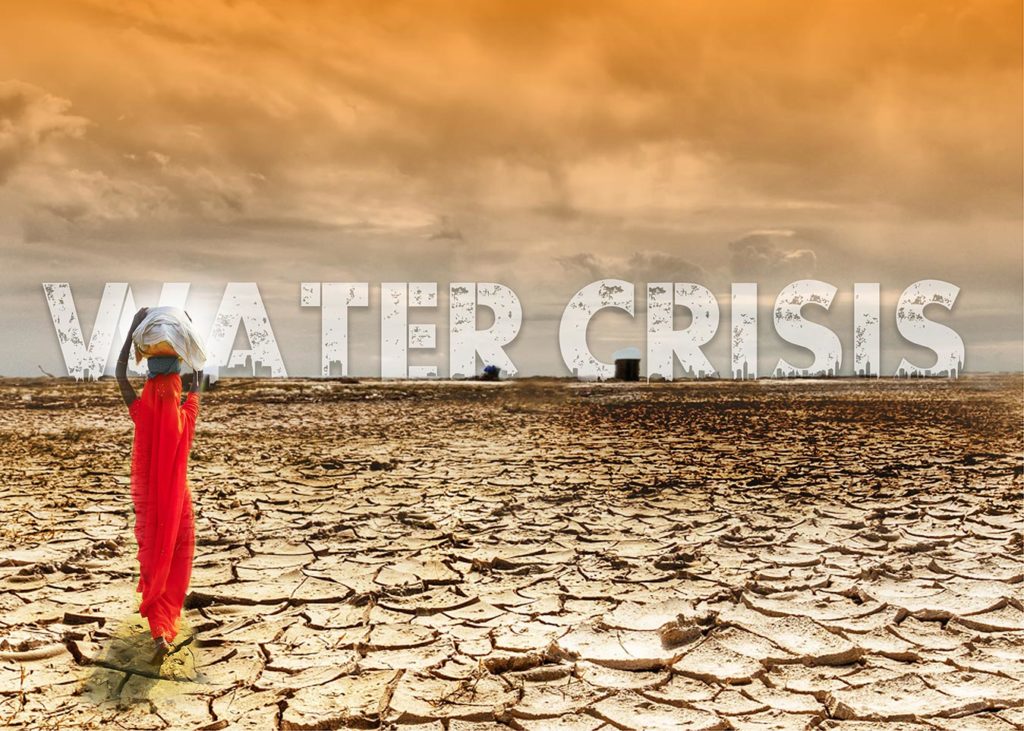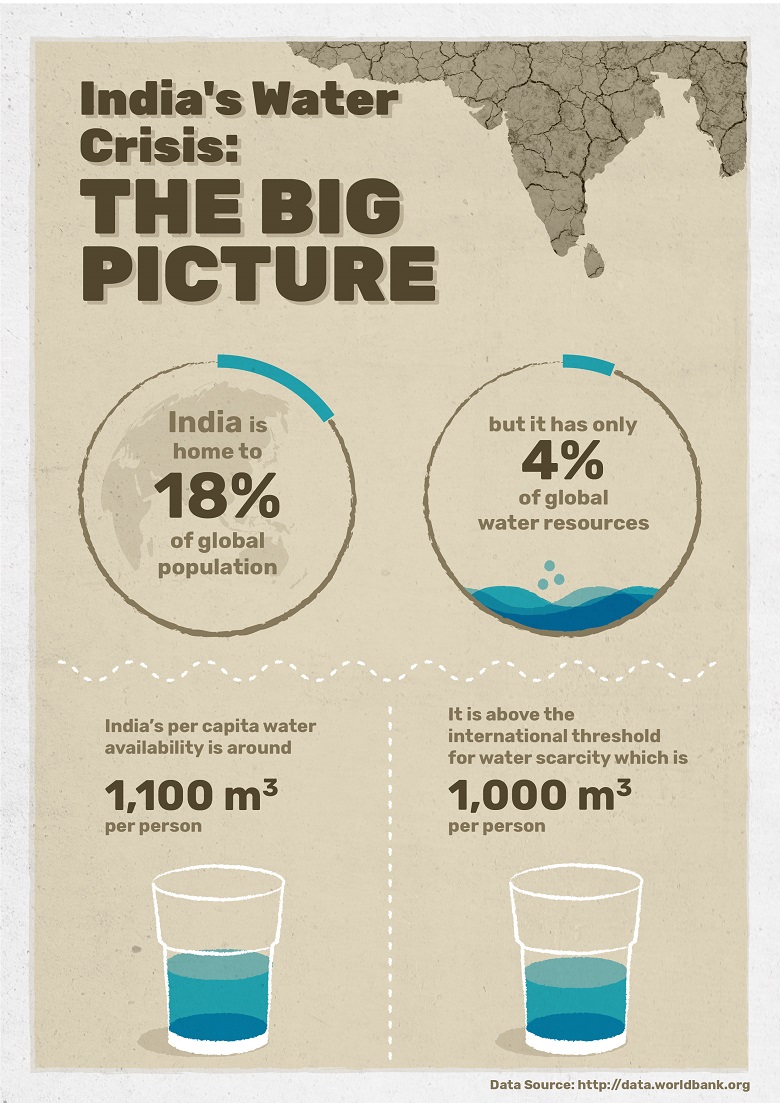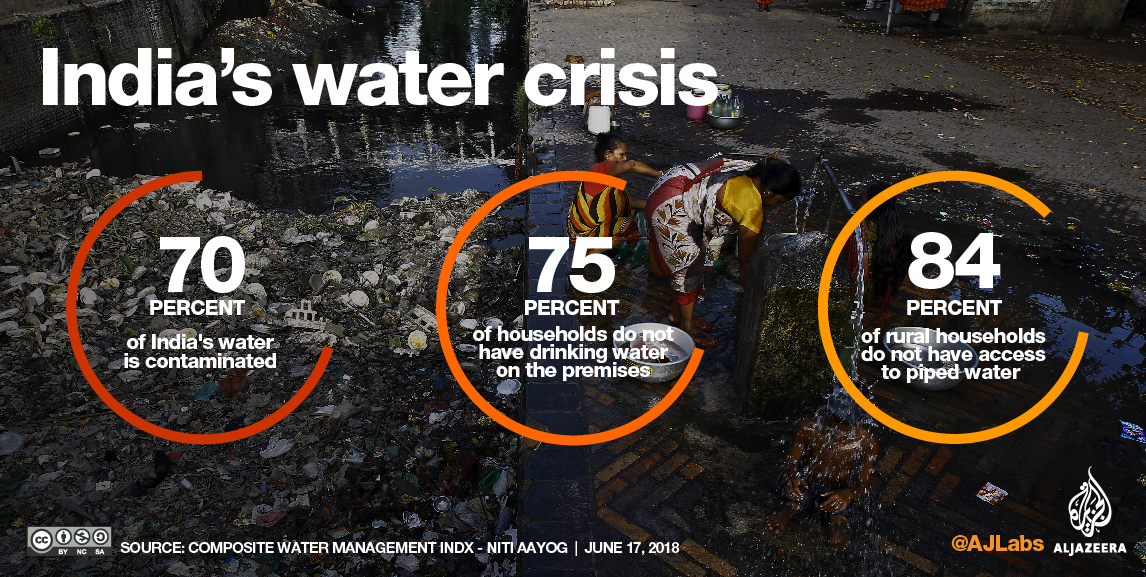More than 50% of the population has no access to safe drinking water and about 200,000 people die every year for lack of access to safe water.

India is currently facing the biggest crisis in its history. And no, it’s not COVID-19. India is suffering from one of the world’s worst national water crises. In fact, it is considered the center of the global water and sanitation crisis. The problem is so big, our lives, livelihoods, and futures hang in the balance. And no, it’s not a problem that can be easily resolved by water pumps, a purifier, and retail bottled water.
More than 50% of the population has no access to safe drinking water and about 200,000 people die every year for lack of access to safe water. Hard facts that 20 ltr water cans can’t solve.
The current coronavirus pandemic isn’t making this national problem easier to handle either. About 82% of rural households are without piped water supply. Washing of hands isn’t a luxury Million of us can afford, nor is keeping ourselves hydrated.
The government is doing its best to mitigate this growing crisis. But is there an end in sight?

How bad is India’s water crisis?
You may not know it, or feel it yet, but every aspect of our society and economy is impacted by this worsening situation. In fact, the National Institution for Transforming India (NITI Aayog) described it as “the worst water crisis” in India’s history. The 2018 Composite Water Management Index (CWMI) noted that 6% of economic GDP will be lost by 2050, while water demand will exceed the available supply by 2030. Food supply is also at risk as areas for wheat cultivation and rice cultivation face extreme water scarcity.
A health risk bigger than you know
As for health? Over 75% of households do not have clean drinking water, while 40% of the population will have no access to drinking water by 2030.
UNICEF data said the estimated economic burden of waterborne diseases is approximately US$600 million as chemicals contaminate the water in 1.96 million homes.
In urban areas, 50 million people in 15 cities have no access to safe, affordable water. Bengaluru has it worse with water only available for three hours, three days of the week, skyrocketing water prices.
And even for those with money to spend, water cans and purifiers aren’t easy solutions. A 2015 study on the quality of drinking water in public utilities revealed even those using water purifiers had exceeded permissible Ph limits and were contaminated with E Coli.
One research revealed the 80 % of million bubble top water bottles sold are unsafe for drinking. Transportation, storage, and exposure to heat still leave bigger water brands susceptible to dirt, pollution, and chemical contamination.
The Water Quality Association India has admitted that a regular water purifier doesn’t work with all types of water. Different filters should be used for a different quality of input water. So customization is necessary as per the input water quality. The most important is tracking the filter life, input water TDS, consumption, and is timely servicing of your water purifier depending on these measures. Which can only be possible with smart water purifiers?
The concept of using a water purifier is totally wrong in the present scenario. People think it is a one-time buying product like a TV, fridge, or washing machine. But you have to understand that maintaining the water purifier is more important which comes with a hefty cost of 5000 Rs. a year. So, does paying yearly maintenance to assure safe drinking water? No, it’s not.

What’s next for India?
The government is aggressively working to address this and has been developing ways to address this growing crisis. Over the past years, it has worked on groundwater recharging projects, micro-irrigation, and legislative changes to promote better water management.
Prime Minister Narendra Modi has also announced “Catch the Rain campaign” to harvest rainwater where it fall, when it fall. Rainwater, the purest form of water is delivered at free of cost to each of us; the purpose of this campaign is to harvest, filter and save it for later use; be it in tanks or in wells in the belly of Mother Earth. We, let it flow to sea or drainages which aggravates the crises further. Simple step by each of us would make the daunting task, easy. And rainwater harvesting is neither expensive nor tedious, it’s growing our own water rather for our health and happiness of Nation.
Each of us have to contribute our share of water to before it becomes unquenchable thirst. Will all these ventures end India’s water crisis soon? Probably yes. But rainwater harvesting is the only steps towards an eventual solution.
As Confucius once said, “The man who moves a mountain begins by carrying away small stones.”
“Let’s save rain today,
And live for better tomorrow”
Vardhman Envirotech
India’s Passionate Rainwater Company.
